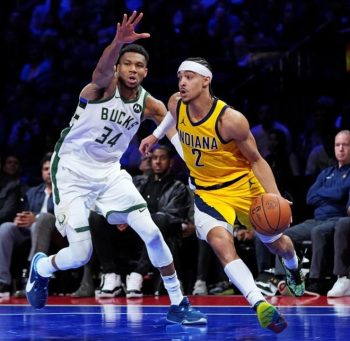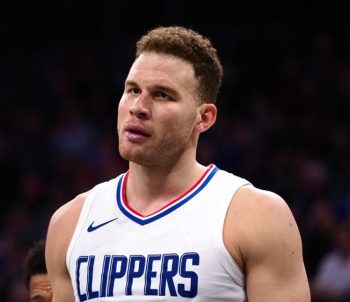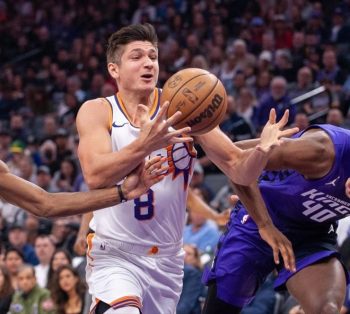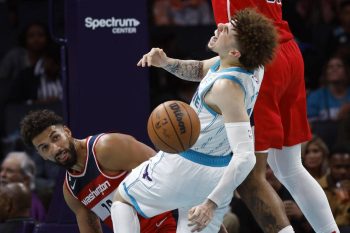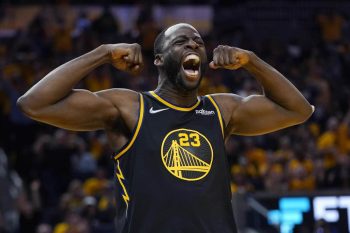NBA
NBA Sunday: It’s Easy to Forget the Celtics are Still Rebuilding

About a quarter of the way through the season, in Boston, one thing has become abundantly clear: these aren’t Paul Pierce’s Celtics.
In fact, through 23 games, one could fairly make the case that they haven’t even been Brad Steven’s Celtics. Not last year’s version, anyway.
In 2015-16, Stevens was one of only seven coaches to receive a first-place vote for Coach of the Year, and it was primarily a result of his team’s overachieving.
In that regard, this year’s team is falling short.
* * * * * *
Having won 48 games last season, on paper, the Celtics appeared ready to challenge the Toronto Raptors for supremacy atop the Atlantic Division. Sure, the team has lost Evan Turner and Jared Sullinger, but the additions of Jaylen Brown and Al Horford were supposed to be a net-plus. Brown was one of the top rookie prospects available and Horford has developed a reputation for being a hard-working, team-first and underrated player.
Thus far, though, the Celtics have managed a record of just 13-10 through 23 games, the exact same mark as last year’s team.
Along with Horford, Jae Crowder has been conspicuously absent, as well. In total, the two have appeared together in 13 contests, in which the Celtics are a somewhat mediocre 8-5. While it is still early in the season, it’s probably fair to say that the team has started off a bit more slowly that many have predicted. And as we look ahead to the future in Boston—both this season and beyond—it’s important to understand that the Celtics won’t truly become a conference contender unless Danny Ainge manages to acquire an All-NBA level talent.
Say what you want about the Celtics and their scrappiness and ability to compete, the NBA always is and always will be a superstar’s league. Over the past 10 years, of the 22 conference champions that have been crowned, only two—the 2007 Cleveland Cavaliers and 2009 Orlando Magic—bucked the familiar trend of requiring multiple Hall-of-Fame talents on the roster.
And now, in today’s NBA, with the proliferation of talent in Oakland, Los Angeles, San Antonio, Cleveland and even Toronto, one can rest assured that this is a trend that will continue.
The thing is, Danny Ainge knows it. That’s why, between now and then, he will be involved if and when any true paradigm-shifting talent becomes available. Whether it be Russell Westbrook or DeMarcus Cousins, the only path forward for the Celtics is one that includes nabbing a true superstar.
Just like Ainge did in 2007.
* * * * * *
Doc Rivers could hardly hide his excitement. As he sat down next to Danny Ainge, he couldn’t help but to fidget, rub his hands and sigh.
For Rivers, everything had changed.
“This is gonna be a lot of fun this year,” Ainge said as he introduced Kevin Garnett and Ray Allen. And as Ainge introduced the modern era’s true embodiment of a “Big Three,” he thanked the players that he had jettisoned in order to assemble the triumvirate. Among them were Al Jefferson, Jeff Green, Gerald Green, Sebastian Telfair, Delonte West and Ryan Gomes.
In acquiring Garnett and Allen, the Celtics also gave up two first round draft picks and one second round pick. In total, it was a king’s ransom, but, obviously, the returns—two conference titles and one NBA Championship—made it all worth it.
Interestingly enough, what we can easily recall from the pre-Garnett days in Boston was that the team had become quite mediocre. Shortly after his arrival in Boston in 2003, believing his team to be stuck in the middle, Ainge grew weary of the team’s falling short to Jason Kidd and their other foes in the conference and made drastic moves—the most famous of which was trading fan-favorite Antoine Walker to the Dallas Mavericks. In the deal for Walker, Ainge acquired a few veterans, as well as the pick that was used to select Delonte West.
Along the way, Ainge continued to move out older pieces such as Tony Battie, Eric Williams and Vin Baker. He was opportunistic when Rasheed Wallace was being moved from the Atlanta Hawks to the Detroit Pistons and seemed to come away from every single trade with at least one of two intriguing young players.
By the time you’d spun around twice, the Celtics had a roster full of intriguing prospects who were 26 years old or younger. Among them were Tony Allen, Leon Powe, Kendrick Perkins, Allan Ray, Rajon Rondo and the aforementioned centerpieces of the Garnett trade—Jefferson, Telfair, West, Gomes and Gerald Green.
In essence, Ainge assembled a roster full of young players who had intriguing potential and patiently waited around until the right deal availed. Along the way, Paul Pierce grew impatient, but decided to trust the process. In the long run, it proved to be worth it.
The difference between the Celtics of the 2006-07 season and the 2016-17 season is that the pieces on the current roster appear to fit together a little better, but in much the same way, you can’t help but to recognize that Ainge’s cupboard is full, especially in the aftermath of the 2013 trade that sent Pierce, Garnett and Jason Terry to Brooklyn.
In that trade, the Celtics got the Brooklyn Nets’ first-round picks in the 2014, 2016 and 2018 drafts. James Young (2014) and Jaylen Brown (2016) have been selected, and the 2018 pick looks quite promising. The Celtics will also have the right to swap picks with the Nets in 2017.
The franchise also owns conditional first round picks, which may or may not vest from the Los Angeles Clippers and Memphis Grizzlies and five additional second round picks between now and the 2020 draft.
In other words, Ainge has a treasure trove of assets at his disposal and, as usual, will be ready to pounce if and when a superstar becomes available. After having traded both Antoine Walker and Paul Pierce in the past, it would be foolish to think that he is married to any of the players on the current roster.
Truth be told, it would be equally foolish to think that the Celtics, as currently constructed, will have an opportunity to be anything more than a marginal Eastern Conference team.
It’s all a part of the cyclical nature of the NBA super team lifecycle.
* * * * * *
Through 23 games, the Celtics have 12 players averaging at least 10 minutes per game. While it’s fair to expect that the rotation will be pared down with Horford and Crowder returning to the lineup, what is true is that Stevens has been put in the unenviable predicament of needing to find rotation minutes for a collection of young players who are somewhat interchangeable.
Between Isaiah Thomas, Avery Bradley, Marcus Smart and Terry Rozier—who is slowly becoming a rotation player for Stevens—the coach must find consistent playing time for four small guards while also finding repetitions for Jae Crowder, Kelly Olynyk, Jonas Jerebko and, most importantly, Jaylen Brown. With Tyler Zeller, Amir Johnson and Horford, Stevens appears to have too many bodies, too few spots and a seemingly difficult task of determining which players and rotations are worthy of his trust.
As the Celtics exercise the picks they have due to them over the coming years, it’s an issue that will only become worse.
In the end, the Celtics may surpass last season’s win total of 48 games, but Ray Allen’s 2012 departure to the sunny shores of South Beach truly signified the end of an era in Boston.
Since then, Ainge has veered off into the path of a proactive rebuild, and his team, in terms of wins and losses, is ahead of the curve. But make no mistake about it, if and when the time comes to move Russell Westbrook or DeMarcus Cousins or even players such as John Wall or Paul George, Ainge will be there, either directly involved or to pluck a few assets along the way.
In the end, the NBA is no different than other walks of life. History has a way of repeating itself, and if you’ve watched closely, you’d see that Ainge does, too.

